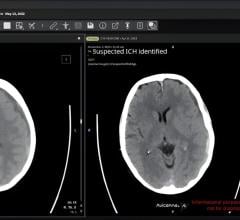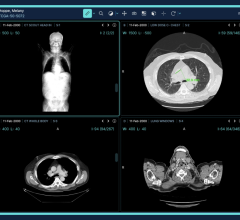
Bycast and IBMs GMAS architecture in a cloud-storage environment protected the clinical data submerged by the Iowa floods in 2008.
Data capacities are doubling every month at hospitals, radiology centers and radiation oncology clinics. Traditional business applications are not sufficient to support the explosion of digital data in a multimedia environment, and providers end up spending large portions of their budgets on maintaining data.
The primary pain points for these facilities include growing data volumes, data protection and the extremely long retention periods, and the situation is only getting worse as demands for capacity increase. One of the most cost-effective storage solutions that facilities are turning to is grid storage that enables cloud storage. This architecture is a fundamental game changer for healthcare as it provides a scalable, secure and high performance platform.
Plug into cloud storage
With the increased pressure to contain or even reduce costs, data centers large and small are faced with the dilemma of dealing with image data overload. Many facilities today are looking at cloud storage as a scalable and cost-effective solution.
Cloud storage is a solution made up of software and hardware technologies that when integrated together enable storage to be utilized as ubiquitously as electricity, but instead of plugging into a wall socket for power, the user “plugs in” to an Intranet or Internet to access storage. The key and important differentiators between cloud storage and other types of storage are its access over an Intranet or Internet connection and its geographic understanding of where the available components of the storage are. This is what provides its cloud-like nature.
Cloud storage’s primary use is to serve as an archive for inactive data, explains Stephanie Balaouras, an analyst at Forrester Research. “This data typically accounts for more than 80 percent of the storage that an IT department maintains. The movement of this data to a less expensive tier of storage can dramatically reduce costs. Yet, cloud storage systems can also disperse data geographically and then serve up the closest copy of that data when the user needs it,” said Balaouras.
As more hospitals are looking for storage back-up in the cloud, eliminating the need to go to tape and go directly to the storage service provider, an off premise cloud is an economical option.
There is also another type of cloud - the internal cloud, noted Balaouras. “An IT department can build an internal cloud to provide services. SLAs and policies automate this entire process, to help you with the metering, internal reporting, memo back or charge back. Think about the cloud in two ways. It’s an internal storage that you can build yourself or it might be you leveraging an external cloud to offsite the information to get it off your premise.”
Cloud solutions like archive storage solutions have capabilities like scaling, redundancy and cost effectiveness in both tiers. However, according to Balaouras, it is unlikely that NAS or Disk Archive specific solutions will morph well into Internet or Intranet geographically dispersed storage.
Similar to disk archiving, scale is critical in cloud storage implementations. Compared to other forms of storage, cloud storage is able to scale to hundreds of petabytes, while continuing to meet service level agreements including uptime, restoration time in the event of disaster and retrieval time as more users plug into the cloud. What separates cloud storage from other forms of storage is a matter of installing the software, attaching the node to the network and identifying it as a node to the cluster.
Bycast Inc. provides software that enables cloud storage providers, or IT departments, to deliver cloud storage services to their constituents. For instance, Banner Health, Iowa Health System and Orlando Regional Healthcare use Bycast software to deliver private cloud storage services to hospitals and clinics in their region.
Grids break down silos
Across the healthcare enterprise, all too often, departmental applications reside in fragmented storage silos. To connect these disparate repositories, many facilities have built in grid storage, a virtualization software that sits between the application environment and the underlying infrastructure. This decouples the application environment from the IT infrastructure and storage environment by combining storage devices across multiple tiers and sites into a single storage repository. This virtualized multitier, multisite archive is presented to all applications in an open standard file interface without the need for any closed or proprietary API.
Ideal for imaging centers with multiple locations, grid storage can serve as an "image delivery gateway" and provide sophisticated image workflow management capabilities.
Last November, Bycast released StorageGRID 8, a grid storage solution that enables cloud storage. According to Bycast, StorageGRID 8 sets a new standard for large-scale long-term digital archives by delivering an open platform that virtualizes information retention and access over a spectrum of storage devices ranging from high-performance disk to archival media, distributed over multiple sites.
“We allow users to align the value to the underlying cost of the underlying storage. We eliminate back-up and address hardware obsolescence by providing this seamless path or migration to newer technology,” said McDermott. As the data is stored it is protected using digital fingerprints validating each time data is accessed, moved between tiers, when it is replicated, when migrated from old to new devices as well as when data is at rest.
The reliability and high-scalability of grid storage is driving its widespread adoption. Siemens Healthcare now bundles grid technology with its Siemens syngo MultiModality Workplace and other solutions. Using the CANDELIS ImageGrid 3 TB Storage, a DICOM server and storage solution, Siemens’ software receives studies from any DICOM modality and is operable with most DICOM viewing workstations. The ImageGrid operating system includes customizable routing, replication for off-site radiologists and referring physicians and a Web-based self-monitoring system. ImageGrid offers RAID 5 archiving with initial capacity points of 3 terabytes (TB) of raw capacity and said to be easily expandable with 10’s of terabytes.
With a grid storage architecture that enables a cloud storage environment you address the key pain points of data management — protection, availability, scalability and cost.


 December 01, 2025
December 01, 2025 









